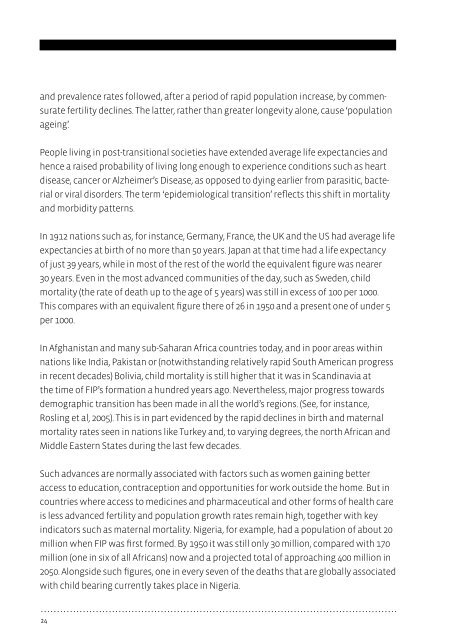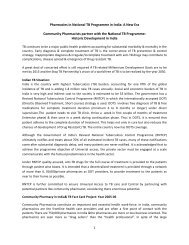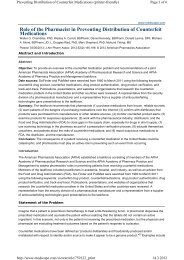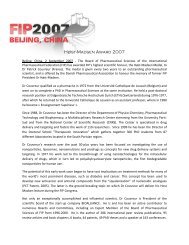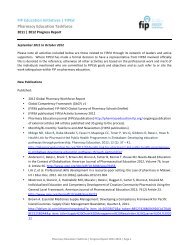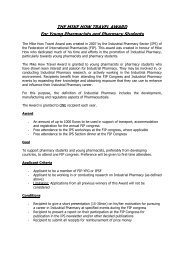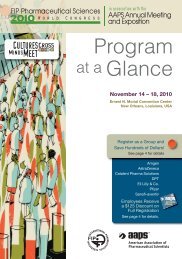Contents - FIP
Contents - FIP
Contents - FIP
Create successful ePaper yourself
Turn your PDF publications into a flip-book with our unique Google optimized e-Paper software.
and prevalence rates followed, after a period of rapid population increase, by commensurate<br />
fertility declines. The latter, rather than greater longevity alone, cause ‘population<br />
ageing’.<br />
People living in post-transitional societies have extended average life expectancies and<br />
hence a raised probability of living long enough to experience conditions such as heart<br />
disease, cancer or Alzheimer’s Disease, as opposed to dying earlier from parasitic, bacterial<br />
or viral disorders. The term ‘epidemiological transition’ reflects this shift in mortality<br />
and morbidity patterns.<br />
In 1912 nations such as, for instance, Germany, France, the UK and the US had average life<br />
expectancies at birth of no more than 50 years. Japan at that time had a life expectancy<br />
of just 39 years, while in most of the rest of the world the equivalent figure was nearer<br />
30 years. Even in the most advanced communities of the day, such as Sweden, child<br />
mortality (the rate of death up to the age of 5 years) was still in excess of 100 per 1000.<br />
This compares with an equivalent figure there of 26 in 1950 and a present one of under 5<br />
per 1000.<br />
In Afghanistan and many sub-Saharan Africa countries today, and in poor areas within<br />
nations like India, Pakistan or (notwithstanding relatively rapid South American progress<br />
in recent decades) Bolivia, child mortality is still higher that it was in Scandinavia at<br />
the time of <strong>FIP</strong>’s formation a hundred years ago. Nevertheless, major progress towards<br />
demographic transition has been made in all the world’s regions. (See, for instance,<br />
Rosling et al, 2005). This is in part evidenced by the rapid declines in birth and maternal<br />
mortality rates seen in nations like Turkey and, to varying degrees, the north African and<br />
Middle Eastern States during the last few decades.<br />
Such advances are normally associated with factors such as women gaining better<br />
access to education, contraception and opportunities for work outside the home. But in<br />
countries where access to medicines and pharmaceutical and other forms of health care<br />
is less advanced fertility and population growth rates remain high, together with key<br />
indicators such as maternal mortality. Nigeria, for example, had a population of about 20<br />
million when <strong>FIP</strong> was first formed. By 1950 it was still only 30 million, compared with 170<br />
million (one in six of all Africans) now and a projected total of approaching 400 million in<br />
2050. Alongside such figures, one in every seven of the deaths that are globally associated<br />
with child bearing currently takes place in Nigeria.<br />
24


